Roland F-140R digital piano – UPDATED REVIEW – June 1, 2021 – The Roland F-140R is now discontinued and has just been replaced with the new 2021 F701 at $1399. The Roland F701 has some upgraded features and additional cabinet colors as compared to the older F-140R for just $30 more. I have done a detailed review of the new Roland F701 so please go to the following link to read my review: Roland F701/RP701 Review In the meantime there may be a few of the older F-140R units still for sale out there so if you are still interested in that model then please read my review below to learn more about it.
![]() The Roland Corporation is a well known music products company which has been producing home and pro keyboards, digital pianos, and many other music products for decades. They are famous for all kinds of digital musical instruments and pro music devices including digital drums, digital organs, digital audio, digital accordions, digital guitar products, and the list goes on. I have personally played Roland digital pianos and keyboards throughout my pro music career as a teacher and pro musician and know them very well. Some of their products I like very much, and some products in the past I have not liked as much…you can’t win them all:)
The Roland Corporation is a well known music products company which has been producing home and pro keyboards, digital pianos, and many other music products for decades. They are famous for all kinds of digital musical instruments and pro music devices including digital drums, digital organs, digital audio, digital accordions, digital guitar products, and the list goes on. I have personally played Roland digital pianos and keyboards throughout my pro music career as a teacher and pro musician and know them very well. Some of their products I like very much, and some products in the past I have not liked as much…you can’t win them all:)

The F-140R compact furniture cabinet model has been out on the market for a little while now and is known as the “flat-top” compact model ($1369 price, bench not included) weighs in at only 76 lbs and is the latest in a series of Roland “F model” pianos that they have produced over the years. I call this a “flat-top model because the key-cover folds down flat over the keys so that the entire top is flat when not in use. I have played all the Roland F series pianos since they came out and I must say that, overall, I am impressed with this latest version. It sounds more authentic & plays better than past models, has more useful features, and is just overall much more satisfying than anything Roland has had in the past. It would be good for many different uses and offers a fairly satisfying playing experience for people to enjoy. So don’t think this so called “entry level” digital piano cabinet model by Roland is only for beginners because it is definitely not. In fact, when comparing the F140R to what Yamaha has to offer right now in a similar price range, Yamaha has some serious catching up to do. However the Korg company does have a model called the C1 Air and in a few important ways the Korg offers a more authentic piano playing experience than this Roland does.
What is it that makes this model worth considering?
First of all, Roland has produced a good hammer weighted & graded piano key action, acoustic piano sound, and pedaling realism that is competitive in this price range for Roland and is as good or better than many other pianos in this price range, which I mentioned earlier. The key action is called Standard Keyboard action and has a more fluid key movement and graded weighting from low to high keys with nice smooth synthetic ivory feel material on the keytops than past Roland key actions. The new Standard Keyboard action also has an escapement/letoff feature which tries to simulate the feel the escapement/let-off (from a real grand piano) which you could not do on the previous model. Although this escapement key movement function is still too subtle and not actually like a real grand piano, at least it’s a more noticeable than in the past but ultimately, not necessary in my opinion. At the end of the day it’s a simulation and won’t really have an impact on your playing. Roland has also improved this key action from older models in the past by decreasing the key noise to an overall acceptable level although their is still some noticeable clunking noise when playing the keys more aggressively when the keys hit bottom along with the action movement itself is a still somewhat heavy (firm) and sluggish as compared to other digital pianos in this price range. It is important to note that Standard action is not as good as the key actions in the higher priced Roland HP digital pianos over $2500 such as the HP704, but that is certainly to be expected. When I say “not as good” that simply means that although the F-140R has a playable key action in this price range, you can get Roland pianos with key actions that are noticeably upgraded for even more authentic key movement. It would be like comparing a good acoustic upright piano to a good grand piano. If you want or need an even higher level of key action authenticity (generally a smoother and slightly lighter touch), look at the the higher priced Roland HP series pianos.
 When it comes to actual acoustic type piano sound, Roland has a 128-note polyphony sound chip which they call SuperNATURAL Piano. The Super natural piano sound in Roland digital pianos has been around in previous models but is different depending on the models. There are three different levels of this SuperNATURAL piano sound in the various models of Roland pianos which I call “good, better, and best.” The F series piano SuperNATURAL sound is good with organic changes in tone color across the entire 88 keys. It is important to note that the Roland piano sound is noticeably more brassy or twangy when playing the key action a bit harder and more aggressively because the piano sound becomes brighter the harder you play the keys and this harder velocity triggers a certain piano tone for the F-140R which results in a “twangy” tone and that is the best way I can describe it. When you play softer on the keys then the tonal changes sound fairly good with expression…but when you play a bit harder the piano sound just gets too twangy & metallic for my tastes and sounds more “digital” instead of organic…at least it does to me, and other people (not everyone) I have spoken to have also mentioned this. So as far as the piano tone goes there are better, more piano-like alternatives such as the Korg C1 Air
When it comes to actual acoustic type piano sound, Roland has a 128-note polyphony sound chip which they call SuperNATURAL Piano. The Super natural piano sound in Roland digital pianos has been around in previous models but is different depending on the models. There are three different levels of this SuperNATURAL piano sound in the various models of Roland pianos which I call “good, better, and best.” The F series piano SuperNATURAL sound is good with organic changes in tone color across the entire 88 keys. It is important to note that the Roland piano sound is noticeably more brassy or twangy when playing the key action a bit harder and more aggressively because the piano sound becomes brighter the harder you play the keys and this harder velocity triggers a certain piano tone for the F-140R which results in a “twangy” tone and that is the best way I can describe it. When you play softer on the keys then the tonal changes sound fairly good with expression…but when you play a bit harder the piano sound just gets too twangy & metallic for my tastes and sounds more “digital” instead of organic…at least it does to me, and other people (not everyone) I have spoken to have also mentioned this. So as far as the piano tone goes there are better, more piano-like alternatives such as the Korg C1 Air

The dynamic tonal and volume range of expression of the acoustic piano sound is quite big and has been noticeably improved over the previous models (which I just mentioned) when playing very soft gentile music to a more aggressive loud piece of music. This is due to the new PHAIV key electronics and the sensing of key repetition has also been improved because Roland has 3 electronic key sensors per key along with an additional key scanning processor dedicated to processing key velocity information makes it so that more advanced players can play music which requires faster note repetition and allows for more noticeable musical expression. The 128-note polyphony power remains the same as in previous models which is how many notes can be played and sustained at one time. Even when layering a stereo acoustic piano sound with a 2nd stereo sound (like string symphony) or adding other digital effects on these pianos, there was no note drop-out at all like I have found on a few other brands. The SuperNATURAL piano sound is recorded from a real grand piano and then enhanced with Roland digital sound technology. When comparing the Roland proprietary 128 note piano polyphony chip with some larger 256-note polyphony chips in other brands, I find there is no discernible difference and the F-140R does a very good job in being able to play a large amount of notes using two or more sounds combined along with other digital features simultaneously, so the polyphony “number” doesn’t always tell the whole story.
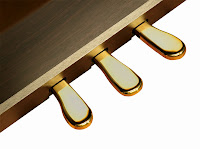 Piano pedals and pedaling ability on digital pianos is also very important and should not be overlooked whether you are a beginner or advanced player. The most important pedal is the right damper/sustain pedal because that’s where 95% of the pedaling happens for most beginners through recreational players. The other two pedals (soft & sostenuto) are used in much less degrees depending on the type of music being played and your pedaling skill level. Roland offers what it calls continuous detection electronics for the damper and soft pedal which means that it will allow for more incremental damper sustain time and soft tonal changes when pressing the pedals down or letting them up instead of just on or off changes the way other digital pianos work. Some piano companies have the half-damper sustain pedal electronics which also can allow for a wide range of sustain for the right pedal which is very good. Roland’s pedal technology works well for beginners as well as more advanced players or students who are progressing in their playing skills. When I was trying out the damper sustain pedal I noticed two things which made the sustain sound more realistic. One of these things was a damper resonance feature giving the piano tone a natural organic sound such as what you would hear in acoustic pianos, along with a much longer sustain/decay time allowing for longer natural decay instead of shorter pedal decay times found in cheaper/off brands.
Piano pedals and pedaling ability on digital pianos is also very important and should not be overlooked whether you are a beginner or advanced player. The most important pedal is the right damper/sustain pedal because that’s where 95% of the pedaling happens for most beginners through recreational players. The other two pedals (soft & sostenuto) are used in much less degrees depending on the type of music being played and your pedaling skill level. Roland offers what it calls continuous detection electronics for the damper and soft pedal which means that it will allow for more incremental damper sustain time and soft tonal changes when pressing the pedals down or letting them up instead of just on or off changes the way other digital pianos work. Some piano companies have the half-damper sustain pedal electronics which also can allow for a wide range of sustain for the right pedal which is very good. Roland’s pedal technology works well for beginners as well as more advanced players or students who are progressing in their playing skills. When I was trying out the damper sustain pedal I noticed two things which made the sustain sound more realistic. One of these things was a damper resonance feature giving the piano tone a natural organic sound such as what you would hear in acoustic pianos, along with a much longer sustain/decay time allowing for longer natural decay instead of shorter pedal decay times found in cheaper/off brands.
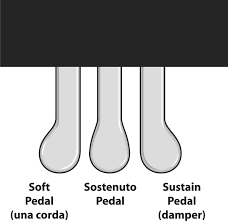
Natural pedal sustain/decay time is how long the sound takes to fade out after striking keys and letting them go while holding the right damper/sustain pedal all the way down. The longer the “damper/sustain pedal decay time,” the better and more natural your music will be. On some of the digital pianos under $2000 that I have played in the past, the amount of damper pedal decay time is typically not very long when holding down the right pedal after playing some keys, especially the keys/notes on the right side of the keyboard. Those are the treble notes on the right side of the keyboard and they fade out the fastest (because they are shorter strings in a real piano while the left keys (bass notes) have the most/longest fade-out time because they are longer strings. This is an important aspect of piano playing because real acoustic piano strings keep resonating for longer periods of time after a key has been played

in the normal playing range with the pedal held down, and a digital piano really needs to get close to that time to offer a natural piano sound playing experience. It takes advanced sound/pedal decay time technology in a digital piano to allow the longer pedal sustain/decay time to take place. The Roland F-140R is one of those pianos and has more natural pedal sustain/decay time depending which notes are being played. That is substantially longer and smoother than many (but not all) of the other digital pianos out there and is an important element not to be overlooked when shopping for any piano. If you are a beginner student then the advanced pedal technology will mean very little to you. But as the student progresses in the playing ability or you are already at an intermediate playing skill level or higher, that pedaling sustain time technology will become very important and these new Roland pianos will rise to the occasion. The middle sostenuto pedal is so seldom used that Roland has also given a person the ability to control various functions of the piano by triggering them with the middle pedal such as on/off drum rhythm function, into/endings, fill-ins, and other things which give a more professional ability to using these extra features. The middle pedal can still trigger the traditional sostenuto function, but it also does these other things too. The bottom line is that full size pedals are important in the way they move, feel, their height position on the piano, and their ability to recreate the actual acoustic piano pedaling experience, and to me that’s something I look for in a digital piano. If the student is a beginner or very small where their feet cannot reach the pedals yet (little kids), then the more advanced pedaling of these new Roland pianos is irrelevant, but later on you will likely be glad you have it:).
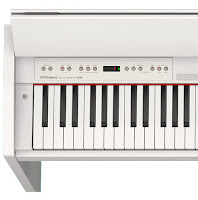
If the better key action (than previous models), piano sound, and pedaling functions was all that were in these pianos, they would still be competitive with other brands...but there is so much more. Let’s start with the instrument sounds and related features. First of all there is a total of 305 tones including 6 primary acoustic piano sounds in a button called “piano”, along with a large selection of strings, choirs, electric pianos, mallets, church/pop/jazz organs, voices, harps, guitars & banjos, accordions, bass, synthesizers, horns, reeds, woodwinds, special effects environmental sounds, and more in another access button called “other.” These sounds are above average quality and they are at a higher realism level of the actual instrument tone, although some of those instrument tones are better than others and some are just OK. Extra instrument tones can be fun to have and use, but for most people buying one of these digital pianos, it is really about “piano playing” and not near as much with these extra instruments.
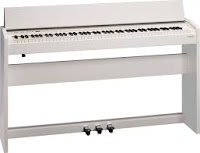
On the control panel, a bright LED display screen reads out info on these various sounds and other features which helps you know what sound or function is being used. Many of the instrument sounds are in stereo and you can combine two sounds together to create a layered sound. You can also split the keyboard into a left and right section wherever you choose, and then assign one sound to the left hand and another sound to the right hand (such as piano on the left hand and harpsichord on the right hand for some interesting classical music), or an upright bass and cymbal on the left hand and a grand piano on the right hand for a bit of jazz, all of which is fun to do. There are also preset sound layers already built-in (such as grand piano and string symphony) which is quite nice, so that you can combine a preset layer like that one with another individual instrument sound and get 3 sounds at one time. That’s a very cool thing because it gives such fullness to the overall sound to have three instruments playing at one time with every key that you touch. You may not use that type of feature often, but I personally like it, especially when trying to reproduce orchestral instrument combinations.
One of the more fun things these pianos offer is the Roland intelligent interactive chord ensemble styles. This kind of function goes way beyond just having drum rhythms or simple accompaniment sounds. The Roland interactive rhythm & chord accompaniments actually sound like CD quality band arrangements including drums, guitars, bass, keyboards, horns, etc that you would hear a live band play. They sound like the real thing instead of toy-like sounds that you would find on other brands of digital pianos and keyboards. With this new interactive chord accompaniment system, you control the band with the chords you play on the left hand and the right hand. This is not a new feature since all the major brands have a system like this including Yamaha, Kawai, and Casio. What makes this one unique is how realistic it sounds as compared with a real band (as I mentioned) and also the flexibility you have with adding or subtracting parts of the band playback chords as well as controlling relative volume with your right hand melody line so one does not overpower the other. There are 72 intelligent rhythm chord accompaniments with an additional more complex arrangement for each one, offering a total of 144 accompaniment patterns, and they all sound great. The band arrangements include a variety of light, medium, and heavy rock bands, jazz bands, 40’s big band, swing, disco, hip-hop, boogie, country, 50’s, Latin, gospel, polka, march, waltz, and ballads from all eras and music styles. But as I just mentioned, these extra instruments and also these rhythms which are certainly fun to use take a “back-seat” to the piano playing experience and for many people they will likely not use most or all of these “extra features” and instead gravitate towards wanting the best piano playing experience they can get in their budget price range.
 The intelligent accompaniments can be used in three different ways. The first way is you can electronically split the 88 keys into two parts wherever you choose on the keyboard, and then you play a 3 finger (or more) chord on your left hand and play a melody with your right hand to go along with the left-hand chord, and the result is that you sound like you are playing in a band, only you are controlling and determining the song you’re playing. A second way of using the feature is to play 1-finger (root note) left hand intelligent chords if you don’t know anything about playing piano at all so even beginners can have fun. This intelligent chord feature is great for beginners (it makes you sound better than you are:) and its also great for accomplished players who can play full chords like me because it adds an entire live band to whatever music I want to play with both hands using as many fingers as I want. I’ve got to say that I was very impressed with the musicality and complexity of these accompaniment chord patterns and the fact you could also control other aspects of the intelligent chords by taking out or muting the actual instruments, bass line, or drum rhythms, or a combination of two or more of those functions while you’re playing the chord. It’s like you have total control of the band and I find that very liberating and useful as compared to other pianos like this under $3000. You can even use the drum beat patterns by themselves to help you with your rhythm and timing by adding a drum beat to your music (instead of using the metronome) without using the interactive chord arrangements. There are super cool intro’s and endings for the arrangements that make the music sound naturally organic, and it offers professional band play-along realism at the touch of a button
The intelligent accompaniments can be used in three different ways. The first way is you can electronically split the 88 keys into two parts wherever you choose on the keyboard, and then you play a 3 finger (or more) chord on your left hand and play a melody with your right hand to go along with the left-hand chord, and the result is that you sound like you are playing in a band, only you are controlling and determining the song you’re playing. A second way of using the feature is to play 1-finger (root note) left hand intelligent chords if you don’t know anything about playing piano at all so even beginners can have fun. This intelligent chord feature is great for beginners (it makes you sound better than you are:) and its also great for accomplished players who can play full chords like me because it adds an entire live band to whatever music I want to play with both hands using as many fingers as I want. I’ve got to say that I was very impressed with the musicality and complexity of these accompaniment chord patterns and the fact you could also control other aspects of the intelligent chords by taking out or muting the actual instruments, bass line, or drum rhythms, or a combination of two or more of those functions while you’re playing the chord. It’s like you have total control of the band and I find that very liberating and useful as compared to other pianos like this under $3000. You can even use the drum beat patterns by themselves to help you with your rhythm and timing by adding a drum beat to your music (instead of using the metronome) without using the interactive chord arrangements. There are super cool intro’s and endings for the arrangements that make the music sound naturally organic, and it offers professional band play-along realism at the touch of a button

When playing chords in the split mode (left hand/right hand), it recognizes the proper bass line no matter what inversion of the chord you are playing (root, 1st inversion, 2nd inversion), and that makes the song you’re playing sound musically correct all the time. Prior Roland piano models could not do this so it’s a nice improvement. There is a 3rd way of using interactive intelligent chord accompaniments playing your music wherever your hands are on the keyboard without you splitting the keyboard into two distinct parts and having to keep your left hand on the left side all the time. With this method, which is useful for more advanced players, the bass line will follow the outline of the chord inversion and play those notes rather than root position notes in the normal accompaniment split position. This feature is called “leading bass” and for those of you who don’t know what I’m talking about, don’t 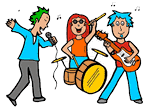 worry about it because it really won’t matter to you in using this interactive chord feature. The advanced players will appreciate this 2nd way of using the accompaniments because then you can determine the bass line by the chord structure and play keys anywhere on the piano without constraint. One thing is for sure, you’ll have fun no matter how you choose to use this new intelligent accompaniment system. You can also change key and transpose the right hand instrument sounds as well as interactive chord accompaniments so that you can play in a key more conducive to your singing range for singalong, or if you just want to modulate to a different key to change it up a bit. One downside to the transpose function is that you need to go into the editing menu to get that to happens and make changes. Roland should have had a dedicated transpose button on the control panel for easier access as some other digital pianos do because going into the editing menu is not intuitive to get to the transpose feature to work. Why Roland did not ask me about designing it the better way on these models, I don’t know…but they should have:). In rhythm section you can control the rhythm (beat) by selecting any tempo/speed and even do some sing-along by plugging in a microphone directly into an audio input of piano. It’s true that there may be some people who may not be using the interactive accompaniment ensemble features much or at all and that’s fine because many people just want to play piano and not have all those “bells & whistles.” But for other people (like me), it’s nice to have it there and be able to have more musical enjoyment because you feel like you are part of a real band or orchestra…and to me that’s always fun.
worry about it because it really won’t matter to you in using this interactive chord feature. The advanced players will appreciate this 2nd way of using the accompaniments because then you can determine the bass line by the chord structure and play keys anywhere on the piano without constraint. One thing is for sure, you’ll have fun no matter how you choose to use this new intelligent accompaniment system. You can also change key and transpose the right hand instrument sounds as well as interactive chord accompaniments so that you can play in a key more conducive to your singing range for singalong, or if you just want to modulate to a different key to change it up a bit. One downside to the transpose function is that you need to go into the editing menu to get that to happens and make changes. Roland should have had a dedicated transpose button on the control panel for easier access as some other digital pianos do because going into the editing menu is not intuitive to get to the transpose feature to work. Why Roland did not ask me about designing it the better way on these models, I don’t know…but they should have:). In rhythm section you can control the rhythm (beat) by selecting any tempo/speed and even do some sing-along by plugging in a microphone directly into an audio input of piano. It’s true that there may be some people who may not be using the interactive accompaniment ensemble features much or at all and that’s fine because many people just want to play piano and not have all those “bells & whistles.” But for other people (like me), it’s nice to have it there and be able to have more musical enjoyment because you feel like you are part of a real band or orchestra…and to me that’s always fun.
 |
| F140R control panel buttons |
When it comes to recording and playback of songs on the F140R, this model does a good job and offers both audio wav file playback of songs (which is CD quality sound) as well as MIDI recording & playback and this MIDI recording function can be very good to have for educational and practice purposes. The MIDI recording feature allows for 1-track recording and playback to occur and you save your recording onto a USB flashdrive inserted under the left side bottom of the piano keyboard. You can then load that recording onto your computer hard-drive and use it in a number of ways to playback your songs and also insert into notation 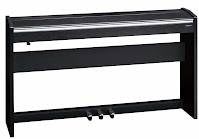 or recording software The MIDI recorder does not actually record sound but only the notes played. The MIDI instrument sounds comes directly from the instrument, computer, or MIDI device it is played through. However, MIDI song playback tempo can be easily changed from fast to slow as well as the transposed key it’s playing back in as opposed to audio recordings that are not able to be manipulated in that way. MIDI playback songs are available on the internet to buy and download and they number in the thousands and I have personally used MIDI files (songs) for years professionally as well as to help my piano students understand music better. All of the Roland digital pianos can do something that few digital pianos can do and that’s having the ability to play complete General MIDI files which I talk more about later in this review. I would definitely liked to have seen a 2-track MIDI recorder built in to these new models instead of just the one track so that you could record left & right hand independently and play them back independently or at the same time. This type of 2-track recording is much better for students when they are learning and practicing their music. With a few exceptions, most of the other pianos and brands in this price range have at least 2-track MIDI recording and playback. It is important to note that the F-140R cannot record audio wav files but only play back those files.
or recording software The MIDI recorder does not actually record sound but only the notes played. The MIDI instrument sounds comes directly from the instrument, computer, or MIDI device it is played through. However, MIDI song playback tempo can be easily changed from fast to slow as well as the transposed key it’s playing back in as opposed to audio recordings that are not able to be manipulated in that way. MIDI playback songs are available on the internet to buy and download and they number in the thousands and I have personally used MIDI files (songs) for years professionally as well as to help my piano students understand music better. All of the Roland digital pianos can do something that few digital pianos can do and that’s having the ability to play complete General MIDI files which I talk more about later in this review. I would definitely liked to have seen a 2-track MIDI recorder built in to these new models instead of just the one track so that you could record left & right hand independently and play them back independently or at the same time. This type of 2-track recording is much better for students when they are learning and practicing their music. With a few exceptions, most of the other pianos and brands in this price range have at least 2-track MIDI recording and playback. It is important to note that the F-140R cannot record audio wav files but only play back those files.
 The Roland F-140R can playback General MIDI/GM song files from a USB flashdrive which is a great feature and one I use all the time in my studio for teaching and playing professionally. The General MIDI song format allows you to play your live piano parts along “with the band or orchestra” using well known songs or lesson book songs (from popular lesson curriculum) in the General MIDI format and to interact with up to 16 instruments playing at one time (stored on a USB flashdrive inserted in the piano) using thousands of popular songs which can be found on the Internet such as movie theme songs, Christmas, famous pop, country, Latin, or Jazz music, and so on. The two largest publishers of piano lesson books in the US have produced General MIDI (GM) files for their lesson books for student playalong and the F140R are the only cabinet pianos found on the internet between $1000-$2000 that can play full General MIDI format 16 track songs. Although General MIDI song files can be useful and fun, a lot of music educational apps for iPad now have built-in songs that sound even better than the older GM files and are controllable in more ways and so more things. So if you connect an iPad (or Android) tablet to any MIDI/USB digital piano you can enjoy your music and your lessons much more in my opinion because I use them in my piano teaching studio for all students to better help with music understanding in a more visual way.
The Roland F-140R can playback General MIDI/GM song files from a USB flashdrive which is a great feature and one I use all the time in my studio for teaching and playing professionally. The General MIDI song format allows you to play your live piano parts along “with the band or orchestra” using well known songs or lesson book songs (from popular lesson curriculum) in the General MIDI format and to interact with up to 16 instruments playing at one time (stored on a USB flashdrive inserted in the piano) using thousands of popular songs which can be found on the Internet such as movie theme songs, Christmas, famous pop, country, Latin, or Jazz music, and so on. The two largest publishers of piano lesson books in the US have produced General MIDI (GM) files for their lesson books for student playalong and the F140R are the only cabinet pianos found on the internet between $1000-$2000 that can play full General MIDI format 16 track songs. Although General MIDI song files can be useful and fun, a lot of music educational apps for iPad now have built-in songs that sound even better than the older GM files and are controllable in more ways and so more things. So if you connect an iPad (or Android) tablet to any MIDI/USB digital piano you can enjoy your music and your lessons much more in my opinion because I use them in my piano teaching studio for all students to better help with music understanding in a more visual way.
 Another useful educational feature offered on these pianos is the ability to electronically split the 88 keys into two equal 44-note keyboards which Roland calls twin piano. This feature digitally sets up the two 44-note keyboards to have the identical piano sound in the identical octave while having the right pedal be used for sustain for the right 44 notes, and the left pedal becomes sustain for the left 44-notes. This allows for two people to play the music at the same time playing the same notes in the same key with the same sound. It’s useful when a teacher and student are playing at the same time in a lesson on the F140R, or when two family members are playing
Another useful educational feature offered on these pianos is the ability to electronically split the 88 keys into two equal 44-note keyboards which Roland calls twin piano. This feature digitally sets up the two 44-note keyboards to have the identical piano sound in the identical octave while having the right pedal be used for sustain for the right 44 notes, and the left pedal becomes sustain for the left 44-notes. This allows for two people to play the music at the same time playing the same notes in the same key with the same sound. It’s useful when a teacher and student are playing at the same time in a lesson on the F140R, or when two family members are playing
the same song at the same time. Although I have seen similar duet type functions on other digital piano brands and models, it’s definitely a
specialized function and most people will not need it because they’ll just never use it. But for others, it could come in handy depending on what you are doing musically. Finally, as far as fun educational features go, there are nearly two hundred famous and useful piano practice songs
in the memory of the F140R to be accessed by the touch of a
couple buttons and the songs sound great with full control over tempo as well as over the left & right hand playback. But again, you can get some amazing music off of some impressive song apps for your tablet (iPad/Android).
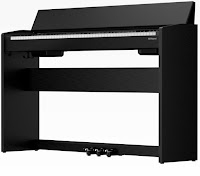
As with most other digital pianos, there are many editing features in the F140R which include being able to incrementally adjust the brightness level of the sound coming through the piano or headphones which allows you to customize the overall sound from mellow to very bright, although as I mentioned earlier, this does not eliminate the twangy piano sound using higher velocity key action pressure. You can also adjust the ambiance/reverb amount from minimum up to maximum, change volumes of many functions & features, select and change metronome beat and tempo, adjust 5 separate levels of key touch sensitivity, change relative volumes between left and right hand parts and accompaniments, and digitally limit the maximum volume of the piano so that you can limit the total loudness through speakers or headphones even if a child should turn the volume all the way up. You can also save editing changes you make in the piano to a user memory so that they will instantly come back up again upon powering the piano up at another time, and other editing functions. You can also save up to 25 of your own sound/function set-up registrations into 25 digital memory slots in the piano. So in addition to a power-up setting memory, you now can edit and save settings such as when you layer 2 sounds together or when you transpose to a different key, or when you want to split the keyboard with two different sounds. Typically when you make changes and then you change to something else, you have to recreate the editing changes again because they otherwise automatically erase. But now you can save 25 of your favorite sound and function custom settings and recall them later at any time without have to recreate them each time you want them again. As far as I know there is no other name brand digital piano in this price range which can do that. For some people this new feature will not be needed but for others it came be quite useful and come in very handy.
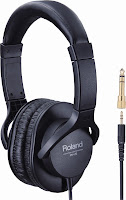
A new feature I found very interesting was the 3D effect through
stereo headphones. It’s
supposed to give you the impression the piano sound is all around you
coming from different directions as opposed to directly into your ears.
Roland calls it “an immersive sound
experience” which gives you the feeling you’re not actually wearing
headphones at all…and that’s really the point of this feature. I tried
it out and personally I don’t care for using it a lot as it somewhat distorts or changes the nature of the piano sound as far as I am concerned. But this is
new technology in digital pianos is a nice feature to have for some people especially if you’ll be using headphones often. This headphone 3D sound effect comes on automatically when powering up the piano but can also be adjusted or turned off completely depending if you want it or not (I turn it off). I will say that it is important to have good sounding higher quality headphones when trying to enjoy the piano privately. This is because lower quality, cheap headphones can make the piano sound tinny or muted and just not very pleasurable. If you are going to use headphones, make sure they are higher quality that reproduce the piano sound in an accurate way that translates the organic tones of the SuperNATURAL sound properly. Roland actually makes a variety of high quality stereo headphones so their headphones would be a good choice for that purpose.
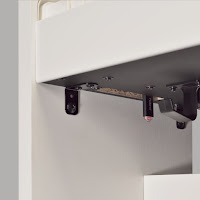 Both models can connect directly to an iPad for another interactive way of learning about music and playing the piano, and I use iOS piano learning/teaching apps in my studio (I mentioned this earlier) which provide a cutting edge visual way of interactive piano practice and learning. A unique feature of the Roland RP/F pianos is that they provide Bluetooth MIDI connectivity with iPad, etc for specific MIDI apps designed to be use with Bluetooth technology. Also the Bluetooth allows for automatic page turning of digital sheet music music from specific sheet music apps by being able to press the other (non-damper) pedal on the piano when you want to turn digital sheet music pages. You will like how easy it is to interface the F140R with an Bluetooth MIDI device. The audio sound from iPad music apps is not transmitted through Bluetooth (no Bluetooth audio) so you would need a connecting cable from the iPad to the piano, but that’s true of some other piano brands too. Bluetooth audio is better, more important form of Bluetooth wireless technology and unfortunately, as I said, the F140R does not have this feature. If you do not have an iPad (or Android), these pianos would make a perfect excuse to get one, and I recommend it! As far as other connectivity, both pianos have USB output to computer, USB
Both models can connect directly to an iPad for another interactive way of learning about music and playing the piano, and I use iOS piano learning/teaching apps in my studio (I mentioned this earlier) which provide a cutting edge visual way of interactive piano practice and learning. A unique feature of the Roland RP/F pianos is that they provide Bluetooth MIDI connectivity with iPad, etc for specific MIDI apps designed to be use with Bluetooth technology. Also the Bluetooth allows for automatic page turning of digital sheet music music from specific sheet music apps by being able to press the other (non-damper) pedal on the piano when you want to turn digital sheet music pages. You will like how easy it is to interface the F140R with an Bluetooth MIDI device. The audio sound from iPad music apps is not transmitted through Bluetooth (no Bluetooth audio) so you would need a connecting cable from the iPad to the piano, but that’s true of some other piano brands too. Bluetooth audio is better, more important form of Bluetooth wireless technology and unfortunately, as I said, the F140R does not have this feature. If you do not have an iPad (or Android), these pianos would make a perfect excuse to get one, and I recommend it! As far as other connectivity, both pianos have USB output to computer, USB
flash drive input to load and save songs, 2 headphone jacks, and stereo audio input and stereo audio output jacks, so there is plenty of external devices that can be connected which is very nice to have. I use technology to teach piano students in my studio, so the more a digital piano has, the better I like it.
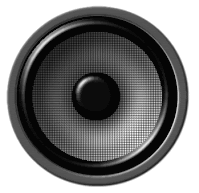 The internal speaker system in the F140R has two speakers playing through two 12 watt amplifiers for a total of 24 watts of power. The stereo sound volume coming out of these pianos is fairly loud when you want it to be and is more than sufficient for most homes and studios and has been improved over the previous model so the sound is a bit louder than before, but there are other digital pianos in this price range with a larger and better 40 watts or more of audio power which produces a much richer and more realistic piano tone. The speakers in the F-140R don’t distort at higher volume and that’s a good thing but again, the tone on the piano sounds can be even more metallic and brassy at the higher volume. I give credit to the
The internal speaker system in the F140R has two speakers playing through two 12 watt amplifiers for a total of 24 watts of power. The stereo sound volume coming out of these pianos is fairly loud when you want it to be and is more than sufficient for most homes and studios and has been improved over the previous model so the sound is a bit louder than before, but there are other digital pianos in this price range with a larger and better 40 watts or more of audio power which produces a much richer and more realistic piano tone. The speakers in the F-140R don’t distort at higher volume and that’s a good thing but again, the tone on the piano sounds can be even more metallic and brassy at the higher volume. I give credit to the
Roland company in being able to maximize the db efficiency of the
F-140R internal speaker/amp systems because at 24 watts total you
might not think that is enough audio power, but in reality it is more
than enough in terms of volume, but not in terms of richness and bass response. I prefer my piano to have a richer and less brassy tone like you would get in the upgraded Casio PX-870 at $999 internet discount price or the Korg C1 Air digital piano at $1449 discount price.
In the final analysis, there are many good digital pianos between $1000-$2000 available on the market today. However, for some good piano playing realism combined with useful educational & fun features, in my opinion, although there are some other brands of impressive new digital pianos in lower and higher price ranges that I do like very much, the Roland F-140R is an enjoyable digital piano overall. For me personally, there are always a few things that I wish a manufacturer would have included such as a 2-track MIDI recorder instead 1-track recorder which would have been beneficial, and there are other digital pianos with that feature. With regard to the LED display screen on these two pianos, although the internal function menu is not as intuitive to navigate using its LED display as compared to a larger LCD screen, at least they have a display because many pianos in this price range don’t have any display at all. So once you get used to it, it becomes fairly easy to use. Overall I think Roland did a good job in this $1000-$1500 price range so the F-140R should be seriously considered when shopping for a new digital piano. Oh, and one more thing…the Roland factory warranty on these pianos is 2 years labor, 5 years parts. That warranty is good considering the price range these pianos are in, so Roland must feel confident about the reliability of these new pianos. Roland does make reliable product based on my experience with them throughout the years as a piano teacher and pro musician. Do your research and your homework before making any buying decisions because there are many digital pianos in this price range to consider, and I would be happy to help you figure it out if you contact me and also be able to help you get even lower discount pricing.
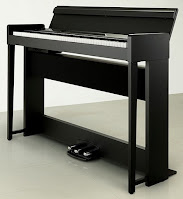 |
| Korg C1 Air matte black |
One more thing. Another “flat-top” digital piano I highly recommend is the newer model Korg C1 Air which sells for $1449 internet price. The Korg digital piano-keyboard company is highly respected by professional players as well as amateurs and this piano is noticeably upgraded over the Roland F-140R in my opinion with regard to key action movement, stereo piano sound, internal sound system, and cabinet along with having the more practical 2-track recorder for students or anyone who wants to practice right and left hand piano parts separately. It even has “Bluetooth Audio” wireless connectivity. The Korg C1 Air focuses squarely on piano playing and does not have as many digital features as the Roland F-140R. This may be a good thing for many piano shoppers because it seems most people tend to want something that has less “bells & whistles” and concentrates more on the piano playing experience. The C1 Air sounds like a real piano through its impressive symphonic speaker system at a big 50 watts coming out directly at the player. Even though the Korg piano is slightly higher priced than the Roland F140R, I would recommend you read my review on the Korg C1 Air and see if this model may be a better choice and investment for your musical needs. The Korg company is also offering an unadvertised extra discount off their regular internet discount price of right now with free shipping and no tax (ask me more about this), so read my review on this model and let me know what you think. Korg C1 Air Review
If you want more info on new digital pianos and LOWER PRICES than internet, Amazon, Bundles, and store discounts, please email me at tim@azpianowholesale.com or call direct at 602-571-1864.
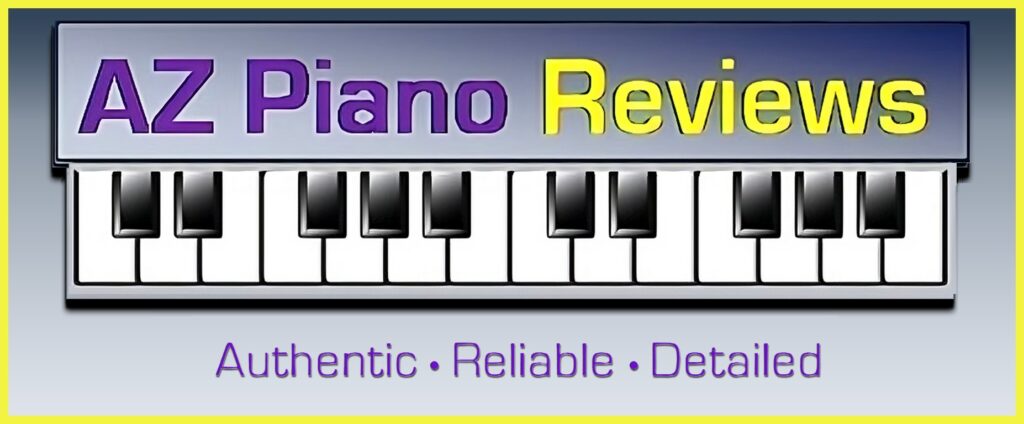




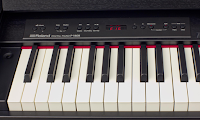


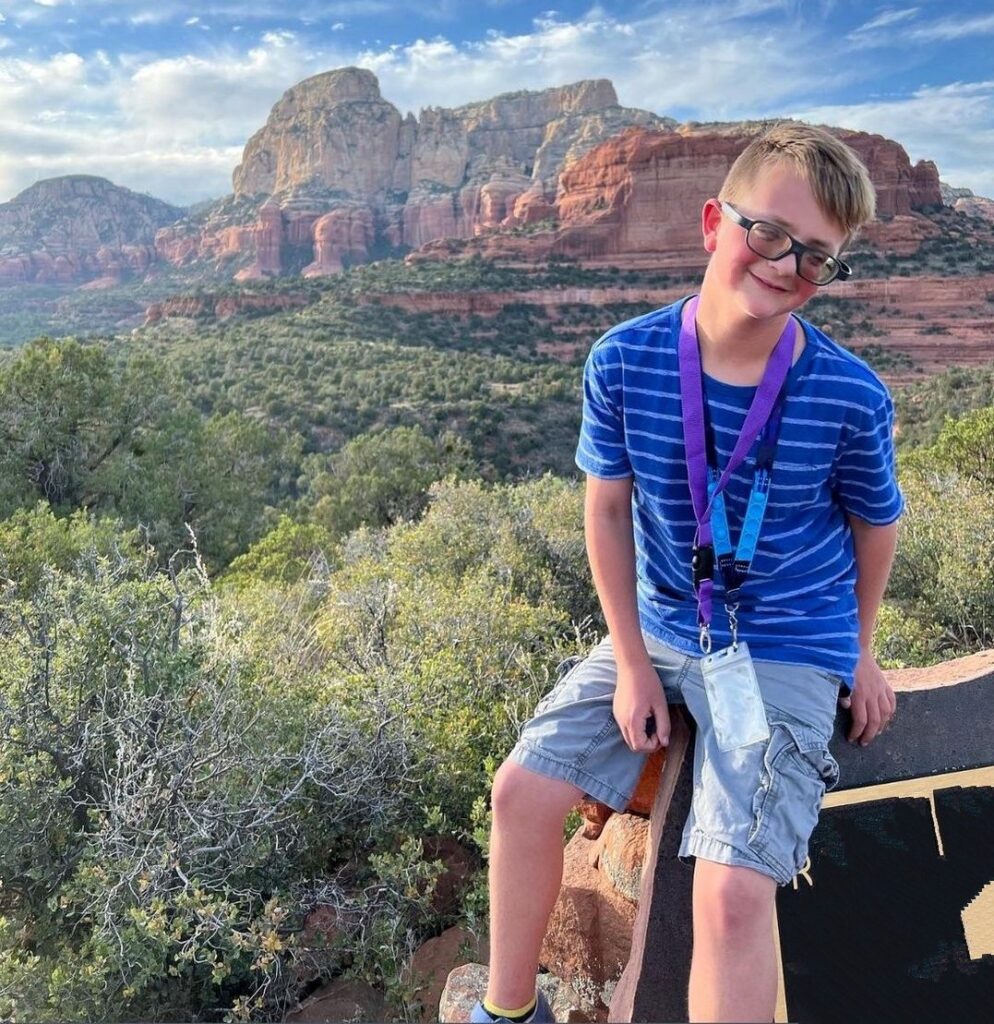
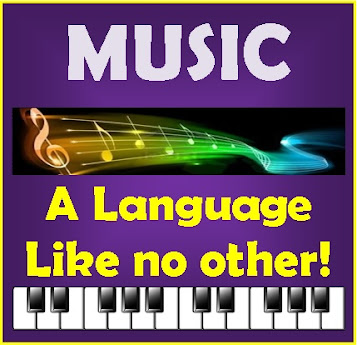
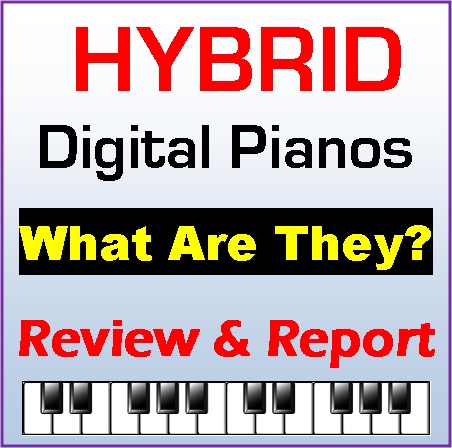
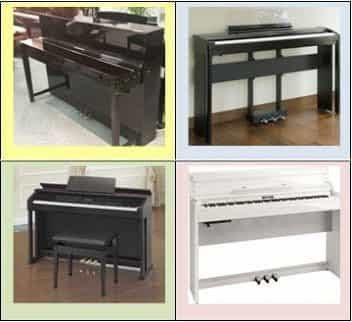
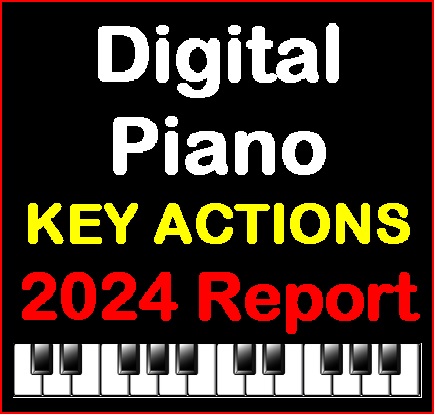
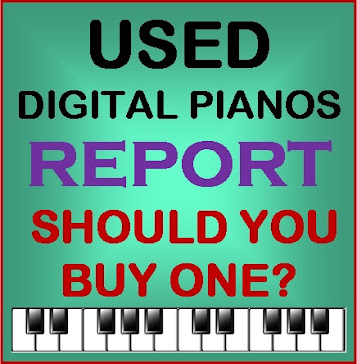
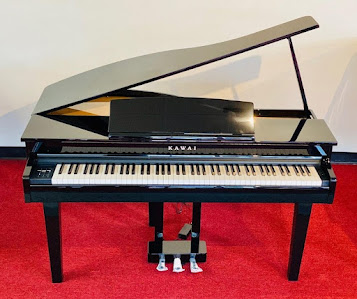
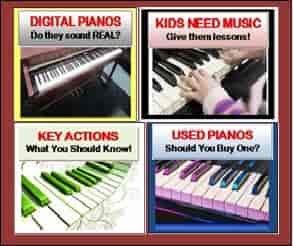
what is the difference between F-130 and F-140 ? Any improvement from F-130 ? Because I still consider the RP-401r.
which one do you recommend ? Thank you.
I'm planning to buy a digital piano at the moment and currently I'm wondering between Kawai ES100 and Roland F140R. My situation is that I was going to lessons for about 6 months around 3-4 years ago and I haven't played since then and I consider myself total beginner at the moment. I'm mostly interested about the differences in the piano sound and key action. I'll be able to test them in store in a week or two, but I don't think I would be able to make big difference myself as I'm beginner. I've heard a few youtube videos with ES100 and I really like it and if that determines my decision I will go for it. However, I'm trying to figure out which is the best compromise for me in terms of better sound action compared to more features (ability to connect with tablets and ease to record later given that ES100 doesn't have Line Out outputs). At the moment I don't know if these iPad apps would make any sense to me, or I'll never use them.
One other question about ES100. I hope to find out for myself when I'm able to test it, but is it stable with the optional stand? In pictures the stand looks quite tiny and I'm not sure if the construction is stable. F140R looks much more solid, and also in terms of looks win for me.
Is the bluetooth connectivity on the F-140R different from what is offered in the RP401R?
I'm debating between these two pianos, and the music score stand on the 140 is quite a turn-off considering I have some large books; I quite liked the one on the 401. Is there any other major differences (other than size, price, and the stand) that might help me decide?
Thanks!
I've played both Kawai ES100 and Roland F140R at the music store. The Roland F140 is not just better but way better in terms of the feel and sound. The Kawai ES100 is more comparable to the Yamaha p115 or the Casio PX160.
agreed, but they are in two different price ranges and the Roland F140R is not portable, so the F140R should be better. The Kawai ES100 is much superior to the Casio or Yamaha key action, piano sound, and pedaling in those lower priced portables…but the ES100 is also more money too
Hello!
Can u give me a little guide?
The FP-30 and F140R sound quality is same? (ok, a little better speaker maybe in F140R)
Thanks
Hi, Tim! What Ipad apps do you use for teaching/learning with F-140R? Roland Piano Partner app is not compatible with this model. Actually it is kind of downgrade from F-130R.
same piano sound chip in both
Piano Partner app has only been available with WiFi. F140R is Bluetooth only and Roland is developing a Bluetooth compatible app that will allow Roland app content to be accessed by Bluetooth in the piano
Hi Tim, between RP401R and F-140, which one would you recommend? I am a bit concern about RP401R not having the Bluetooth technology and if I go for it now, would the piano could become an outdated technology soon? Do you know when or if Roland is planning to come up with a RP series with Bluetooth technology?
Why would someone want to buy RP401R if there is a new F-140R with more advanced technology?
I am in the process of looking for a piano to play casually at home and most importantly, for my son who just started learning the instrument.
Thank you so much for all your valuable review.
Hi Tim,
I've got the exactly same question and concern with the above.
Which type would you choose yourself, is it RP401R or the latest F140R? And why?
Thank you.
i like the cabinet, the sliding key cover, and the placement of the music rack better on the Roland RP401R than on the F140R. Also, the RP401R has WiFi capability and can connect with the Roland Piano Partner iPad app which is very useful in many ways. The F140R cannot do this even though it has some Bluetooth capability.
New F140r or a secondhand DP 990 ?
either one would be good although F140R has more digital features with regard to interactive chord and drum styles along with some bluetooth connectivity
Would one be more superior for realistic grand piano sound ?. Not that interested in the other features ?
personally I would much rather own a Kawai ES7 for the much better piano key action, piano sound, and pedaling authenticity as compared to the Roland's you mentioned, but the Kawai is more money although I know of a low discount price on that one right now. As for the Roland pianos you mentioned, I would personally choose the F140R
sorry to bug you fine folks, but I managed to extend my budget slightly. Would you recommend the Yamaha CLP-525 / or 535 over the roland f140r?
Actually I much prefer the Kawai CE220, Kawai CN25, Roland RP401R, or Casio AP460 over those two Yamaha models especially with regard to key action and digital functionality.
Hi Tim, Thanks for this. I am looking to buy a new digital piano and am contemplating the RP401R and F140R. Which would you recommend. I like the wifi feature on the RP401 though its been on the market for 2 years and fear as soon as i buy it the RP501 will be released. The F140R is a later model and has new features like bluetooth yet no wifi?
Any advice.
I am disappointed that the Bluetooth is disabled in my country.. What is the reason? Anyone else have the same limitation?
What country are you staying in? Singapore?
What piano has a better key action, the Roland f140r or the Kawai cn 25? How much difference exist?
Hi Tim, I am choosing between the Roland f140r and the Kawai cn 25, what piano do you recomend?
Also what exactly think about key feel in Casio?, I tried and found that kid experienced some difficulties compared to Roland but it can just be he's a beginner….
Thanks for the reviews! Does this use different piano samples than the FP30? In your FP30 review, you talk about tuning issues.
Bought a F-140R in December 2015 and was not happy with its touch (hard touch weight / spongy after that) & sound (kind of dull compared to Yamaha baby grand) and replaced it this month with ES100. Am now very happy: touch & sound is closer to the Yamaha acoustic
Hi,
Great review – how does the Roland F140R compare to the Casio PX780?
Thank you
hi need help. what is the deferent Roland F140R and Roland F120R
Hi Tim,
Excellent review! Which one would you recommend F140r or yamaha Ydp 163 for piano sound quality? I tried both. I am new to weighted keys. I have been playing Korg PA-50. I found myself playing longer on F140r when trying out,but every time I changed to ydp 163,I kind of liked the piano sound a little better. F140r is definitely feature rich. I am leaning towards it. I look forward to to your recommendation.
Thanks,
Dilip
I like both pianos for different reasons but prefer the F140R for its key action and piano tonal dynamics.
Hello Tim, i still hesitate between those piano: Roland F-140r, Casio PX-870, Korg C1 air,… Kawai is good choice
Looking for a small piano with good sound and feeling touch keyboard.
Can you help me? This is for my son. Best regards
Roland F140R vs. Casio AP-270. Any suggestion?
Hello Tim, i still hesitate between the px 870, roland F140r and the Korg C1 air. Can you help me to choose one? Looking for a good one, not too big, good sound and good feeling of touch, sorry for my english. Kawei is a good choice?
Regards
Casio for better piano sound, key action, pedaling. Roland for more "bells & whistles."
Thanks. If it was only for me I would take Casio. But it's also for my small son, I am wondering if more technology like rithms and sounds will help him to like music more.
Also F140 has Czerny and Hanon… I don't know if it's really useful to have them in piano, expecially Hanon.
Hard decision 🙂
Now I will test both; unfortunately this cannot happen in the same day because i don't know any shop that has both Casio and Roland.
hello Tim, I must admit your reviews are one of the best ones on the net. Very thorough and fun to read. I'h having a dylema between this remarkable Roland F140R and the new Kawai KDP 110. It's for my daughter to start with piano adventure. Which one would you choose?
Hi Tim,
Thanks for your thorough reviews.
Do you think FP30 and F140R feel the same? I'd save money by going with FP30 but was surprised that despite both pianos using PHA4, the F140R felt better to play on to me. Am I imagining things?
I'm also struggling between these two models. Looking fwd to hearing your thoughts, Tim.
Between those 2 models (Kawai, Roland) I much prefer the Kawai for a more authentic playing experience for key action, piano sound, pedaling response, and internal speaker system. The KDP110 just has a much more natural and pleasing sound and comfortable key action.
Hi Tim,
Thank you for you in-depth reviews on pianos. Could you let me know if the Roland F104R is similar or the same as the Roland CPF-140 selling at Costco (https://www.costco.com/roland-cpf-140-super-natural-digital-piano-bundle.product.100235952.html)? If they are not the same, would you recommend the CPF-140 as a starting piano for youngsters?
Thanks!